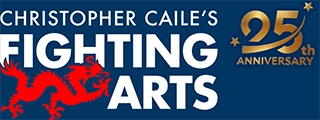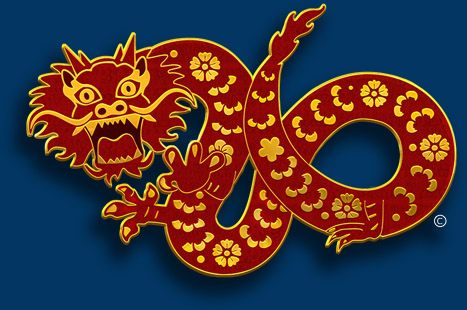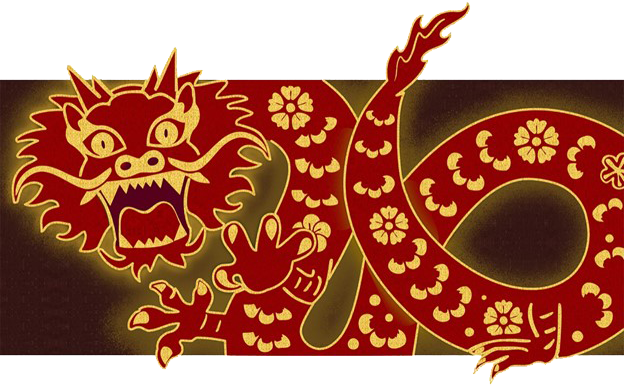Crazy Medicine:
Healing With Your Own Energy
by Christopher Caile
Qi gong, the Chinese art of energy cultivation and healing, is a crazy science. It makes absolutely no sense to many in the West, but like its younger brother, Acupuncture, a begrudging respect for it is growing among a wide strata of Western Health professionals.
While the study of qi gong is endless and takes years to perfect, many of its exercises are simple and easy to practice. The Chinese believe that the physical functions and processes recognized in Western Medicine are vitalized and integrated by the flow and harmony of body energy known as qi. Just as external muscles respond to exercise, the Chinese teach that the body can also be stimulated by the practice of qi gong.
One healing exercise is the subject of this article. It is useful for sprains, bruises, muscle pulls, post surgical healing and joint pain — almost anything that needs repair or healing. And best of all it is very effective, safe and requires no special training.
Before describing the exercise I would like to tell a story that sheds light on the effectiveness of this technique. A few years ago I was returning from California to New York by plane. After getting myself secured in my seat I couldn't help notice an elderly gentleman sitting next to me dressed in athletic gear. We got to talking and he informed me, quite proudly, that he was over 70 years old, and was a senior marathon runner; "one of the top in the country," he said. "Isn't it difficult on your body?" I inquired. "Well," he answered," when I was a young man, around 50, my knees began killing me. I had to stop running. But then I met this doctor who taught me a new meditation exercise he developed. It's not exactly western medicine but it really works. Now the knees are great. So now I also use the exercise on anything else that hurts."
I couldn't contain my curiosity and asked what that exercise was. As he spoke, a wide smile spread over my face. What he recounted was almost exactly the same as an ancient treatment practice that had been taught to me many years earlier by my own qi gong teacher, Dr. Zaiwan Shen. The only difference was terminology. I never told that man about my qi gong experience, but his story strengthened my belief in the power of the art. It's also a good story.
Before I describe the healing practice, I must caution the reader. The practice is very simple, so simple that many people say "sure" but fail to try it. Don't confuse simplicity with effectiveness. Here you will be using your mind, your energy and blood supply to heal. You should see results in weeks. I use it personally all the time.
You can assume any body position, standing, lying or sitting, but I prefer the latter. The exercise has two steps, first relaxation and then energy meditation.
Relaxation
If lying down, lie on your back, arms to the side, palms up, and legs slightly apart. If seated, sit on the edge of the chair with your back straight. Place you hands, palm up, on your knees. If standing, stand straight, your head over your trunk, chin slightly pulled in, the whole body relaxed but elongated as if there were a string attached to the top of your head pulling upward.
The relaxation exercise has two parts. In part one, take a deep breath, using your abdomen, as well as your chest. Pull your shoulders upward toward your ears with a deep in-breath, hold and then exhale. Let your shoulders drop as you exhale. Do this several times feeling yourself relax and letting your arms feel like wet dish towels.
In part two of the relaxation exercise breath naturally from your abdomen as you concentrate on various segments of the body starting with the head for about 30-60 seconds. Then move down to the chest, followed by the abdomen, upper legs and finally the lower legs, concentrating on each segment for 30 to 60 seconds. Repeat this exercise several times, if you have time. At the end you should feel relaxed, without tension, thought or anxiety.
These two relaxation techniques are fairly standard and are used by many. If you have another relaxation technique you prefer it is perfectly acceptable for purposes of this exercise to use what you find effective.
Energy Meditation
This part is the meat of the exercise. Ideally do this exercise twice daily, in the morning and again in the evening or at night.
Take in a deep abdominal breath and visualize energy coming in with your breath and sinking down into your lower abdomen just below your belly button. Don't hold your breath. As you breathe in several times, try to feel the energy concentrating. You can also visualize a ball of energy like a balloon filling up deep in the abdomen.

Now visualize a valve opening in the balloon and energy shooting out to the area you want to treat. Here we will use the right knee as an example. Let the energy go down the leg to the right knee. Now concentrate on knee alone. Feel for heat and energy building there. You can also visualize a white ball of energy encompassing the knee completely. Do this for about ten minutes. At the end the knee should feel warm. Some people can even can feel a pulse (of blood) in the area. This is ideal. An old Chinese adage goes, "Where the mind goes, qi will follow. Where qi goes, blood with follow."

During this energy meditation do not think, listen to the radio, TV or to others and try not to become distracted. Don't think about what is happening or try to figure out why the exercise works. This stimulates the wrong part of the brain which interferes in the process. Likewise it is important to believe in the process, or at least suspend judgment. Research has also found that body cells and tissue respond to intent and emotion. Thus if you feel anything, it should be a happiness or a feeling of love. You can, at the end, visualize a healing process and yourself freed from the condition you wish to heal.
Don't expect to do this healing exercise in the morning and feel healed by evening. While effective, this exercise works to stimulate and maximize the body's own healing capacities. It takes time, so don't be discouraged. It will take weeks but you should feel change as your body repairs itself.
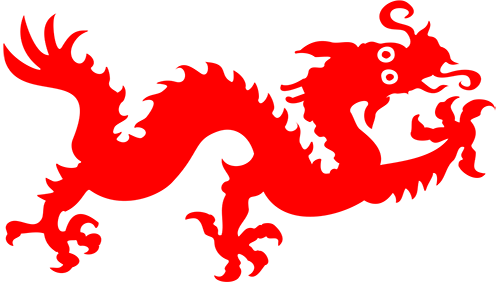
About the Author Christopher Caile
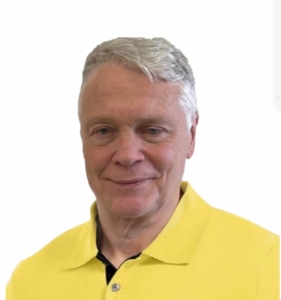
Screenshot
Christopher Caile is the Founder and Editor-In-Chief of FightingArts.com. He has been a student of the martial arts for over 65 years.
He first started in judo while in college. Then he added karate as a student of Phil Koeppel in 1959 studying Kempo and Wado-Ryu karate. He later added Shotokan Karate where he was promoted to brown belt and taught beginner classes. In 1960 while living in Finland, Caile introduced karate to that country and placed fourth in that nation's first national judo tournament.
Wanting to further his karate studies, Caile then hitch hiked from Finland to Japan traveling through Scandinavia, Europe, North Africa, the Middle East and South and Southeast Asia — living on 25 cents a day and often sleeping outside.
Arriving in Japan (1962), Caile was introduced to Mas Oyama and his fledgling full contact Kyokushinkai Karate by Donn Draeger, the famous martial artist and historian. Donn also housed him with several other senior international judo practitioners. Donn became Caile's martial arts mentor, coaching him in judo and introducing him to Shinto Muso-ryu under Takaji Shimizu.
Caile studied at Oyama's honbu dojo and also at Kenji Kurosaki's second Tokyo Kyokushinkai dojo. In his first day in class Oyama asked Caile to teach English to his chief instructor, Tadashi Nakamura. They have been friends ever since. Caile also participated in Oyama's masterwork book, "This Is Karate."
Caile left Japan with his black belt and designation as Branch Chief, the first in the US to have had extensive training in Japan directly under Oyama Sensei. As such, Oyama Sensei asked him to be his representative on visits to his US dojos to report on their status.
A little over a year later, Nakamura, Kusosaki and Akio Fujihira won an epic David vs. Goliath challenge match against Thailand's professional Muay Thai Boxers in Bangkok, Thailand, thrusting Kyolushinkai and Nakamura into national prominence.
Back in the US Caile taught Kyokushinkai karate in Peoria, Il while in college and later in Washington, DC. while in graduate school. Durimg this time Shihan Nakamura had moved to New York City to head Kyokushinkai's North American Operation.
In 1976 when Kaicho Tadashi Nakamura formed the World Seido Karate organization, Caile followed. Living then in Buffalo, NY, Caile taught Seido karate and self-defense at the State University of New York at Buffalo (SUNY Buffalo) for over 15 years where he also frequently lectured on martial arts and Zen in courses on Japanese culture.
Caile moved to New York City in 1999 to marry Jackie Veit. He is now an 8th degree black belt, Hanshi, training in Seido Karate's Westchester, NY Johshin Honzan (Spiritual Center) dojo. In Seido Caile is known for his teaching of and seminars on kata applications. He also produced a 14 segment video series on Pinan kata Bunkai currently available to Seido members.
Caile is also a long-time student and Shihan in Aikido. He studied in Buffalo, under Mike Hawley Shihan, and then under Wadokai Aikido's founder, the late Roy Suenaka (uchi deshi under Morihei Ueshiba, founder of Aikido and was Shihan under Tohei Sensei). In karate, Suenaka (8thdan) was also an in-house student of the Okinawan karate master Hohan Soken.
Having moved to New York City, Caile in 2000 founded this martial arts educational website, FightingArts.com. Twenty-five years later, in 2025, it underwent a major update and revision.
For FightingArts.com and other publications Caile wrote hundreds of articles on karate, martial arts, Japanese art, Chinese Medicine and edited a book on Zen. He also developed relationships with a cross section of leading martial arts teachers. Over the last four decades he has conducted extensive private research into karate and martial arts including private translations of the once secret Okinawan hand copied and passed on Kung Fu book, the Bubishi, as well as an early karate book by the karate master Kenwa Mabuni. He periodically returns to Japan and Okinawa to continue his studies and participate Seido karate events. In Tokyo he practiced (with Roy Suenaka Sensei) in a variety of aikido organizations with their founders – including private interviews and practices at the Aiki-kai Aikido Honbu dojo with the son and grandson of aikido's founder, Doshu (headmaster) Kisshomaru (an old uchi-deshi friend) and his son, Moriteru Ueshiba and in Iwama with Morihiro Saito. On Okinawa he studied Goju Ryu karate under Eiichi Miyazato, 10th dan founder of Naha's Jundokan, and also with Yoshitaka Taira (who later formed his own organization, who specialized in kata Bunkai. While there Caile also trained with Hohan Soken's senior student, Master Fusei Kise, 10 dan as well as with the grandson of the legendary karate master Anko Itosu.
Caile's other martial arts experience includes: Diato-ryu Aikijujitsu and Kenjitsu, kobudo, boxing, Muay Thai, MMA, Kali (empty hand, knife and bolo), study of old Okinawan Shoran-ryu & Tomari body mechanics, study of old Okinawan kata under Richard Kim, study of close quarter defense and combat, including knife and gun defenses, Kyusho Jitsu and several Chinese fighting arts including 8 Star Praying Mantis, Pak Mei (White Eyebrow), and a private family system of Kung Fu.
Caile is also a student of Zen as well as a long-term student of one branch of Traditional Chinese Medicine, Chi Kung (Qigong). As one of two senior disciples of Chi Kung master Dr. Shen (M.D., Ph.D.) Caile was certified to teach and practice. This led to Caile's founding of the The Chi Kung Healing Institute on Grand Island, NY. In Western NY, he also frequently held Chi Kung seminars, including at SUNY Buffalo and at the famous Chautauqua Institution in Chautauqua, NY. His articles on Chi Kung also appeared in the Holistic Health Journal and in several books on alternative medicine.
Caile holds a BA in International Studies from Bradley University and MA in International Relations with a specialty in South and Southeast Asia from American University in Washington, D.C. While in Buffalo, NY he also studied digital and analog electronics.
In his professional life Caile also worked in public relations and as a newspaper reporter and photographer. Earlier he worked in the field of telecommunications including Managing a Buffalo, NY sales and service branch for ITT. He then founded his own private telephone company. This was followed by creation of an electrical engineering company that designed and patented his concept for a new type of low-cost small business telephone system (which was eventually sold to Bell South). The company also did contract work for Kodak and the US space program. Simultaneously Caile designed and manufactured a unique break-apart portable pontoon boat.
Most recently Caile co-founded an internet software company. Its products include software suites with AI capability for control and management of streaming media, such as video and music, an all-in-one book publishing software product for hardcover, eBook and audio book creation and security software for buildings and government use.
For more details about Christopher Caile's martial arts, work experience and life profile, see the About section in the footer of this site.
Search for more articles by this author:
